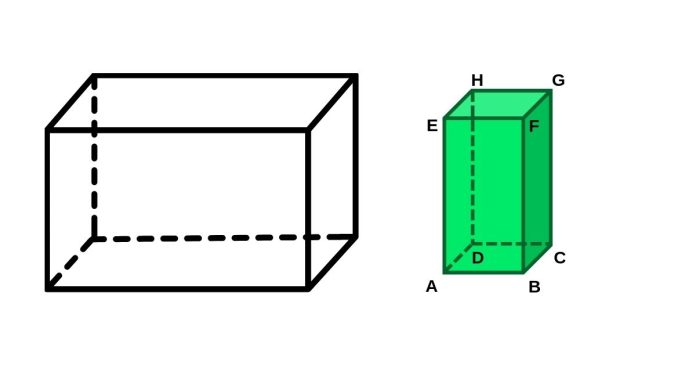To determine the net of a rectangular prism, you need to visualize or unfold the 3D shape into a flat, 2D layout. A net for a rectangular prism is a set of connected rectangles that can be folded along edges to form the prism.
A rectangular prism has:
- 6 faces: Each pair of opposite faces is congruent and rectangular.
- 12 edges.
- 8 vertices.
Characteristics of a Net for a Rectangular Prism:
- Six Rectangles: The net must include six rectangles (or squares, if the prism is a cube), representing the faces of the prism.
- Connectivity: The rectangles must be connected in a way that allows them to be folded into the 3D shape without overlapping.
- Face Arrangement: Typically, four rectangles form the sides, with one rectangle attached at the top and another at the bottom.
Common Net Layouts:
- Cross Layout:
- Four rectangles in a row represent the lateral faces.
- One rectangle at the top and another at the bottom, forming a “+” shape.
- T-Shape Layout:
- Three rectangles in a row.
- One rectangle is attached to the top middle, and two rectangles are attached to the ends.
Key Check:
To confirm a net represents a rectangular prism, ensure that all six rectangles are present, they can fold into the 3D shape, and no faces overlap in the process.


